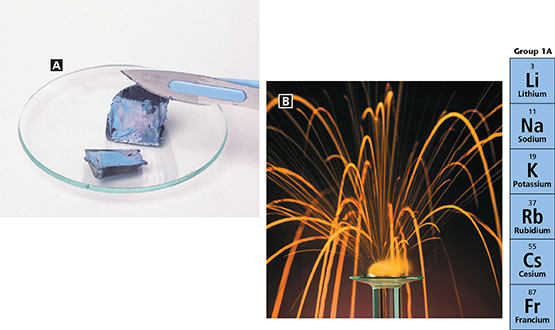Figure 15 The element sodium is an alkali metal A Unlike most metals, sodium is soft enough to cut with a knife. B When sodium reacts with water, enough energy is released to ignite the hydrogen that is produced.
Predicting What happens when potassium comes in contact with water?
 d
dThe Alkali Metals
The elements in Group 1A are called alkali metals. These metals have a single valence electron and are extremely reactive. Because they are so reactive, alkali metals are found in nature only in compounds. The most familiar of these compounds is table salt—a compound of sodium and chlorine (sodium chloride). Sodium chloride can be obtained through the evaporation of seawater or from large salt deposits on the surface of Earth or underground.
Not all the elements in a group are equally reactive. Sodium is more reactive than lithium, potassium is more reactive than sodium, and rubidium is more reactive than potassium.  The reactivity of alkali metals increases from the top of Group 1A to the bottom.
The reactivity of alkali metals increases from the top of Group 1A to the bottom.
Sodium is about as hard as cold butter and can be cut with a sharp knife, as shown in Figure 15A. Sodium melts at about 98°C and has a lower density than water. A piece of sodium may be able to float on water, but Figure 15B shows that it won't be there for long. The sodium reacts violently with water and releases enough energy to ignite the hydrogen gas that is produced. Sodium and potassium are stored under oil to keep them from reacting with the oxygen and water vapor in air. Cesium is so reactive that it reacts with water at temperatures as low as −115°C. Cesium is usually stored in a sealed glass tube containing argon gas.
 How many valence electrons does an alkali metal have?
How many valence electrons does an alkali metal have?





